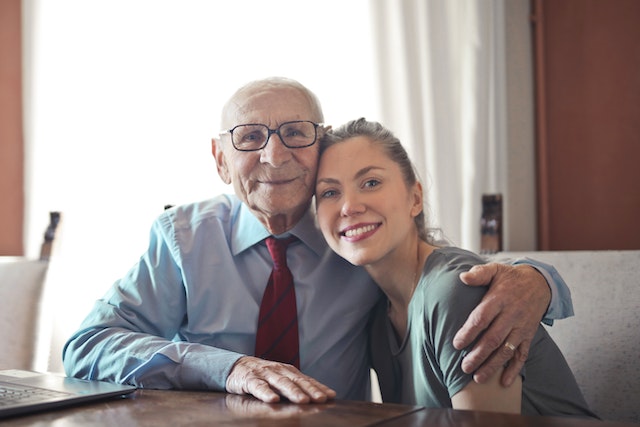Caring for an elderly relative with mobility problems can be difficult, especially if they are reluctant to ask for help or worse, if they are unwilling to accept that they need help. And having a conversation about the possibility that they need some kind of help without a) upsetting them and b) hurting their pride can be just as difficult.
I remember my mother having a hard time convincing my grandfather to use it walking sticks and later a wheelchair when his health began to deteriorate and he experienced reduced mobility. She got there eventually, but he didn’t give her half a hard time. And all because he wanted to keep going and not bother anyone. He was a really stubborn so-and-so sometimes!
Ultimately, we only want the best for our aging loved ones. We want to ensure that their quality of life remains as close to the way it has always been and that they can continue to live in the comfort of their own home for as long as possible. Whether it’s making activities and movements around the home as simple as possible, ensuring they can continue to navigate nature safely, or continuing the enjoyment of a beloved hobby, help is available to help them do just that. to do this.
In this article, we’ll look at some ways you can help your older relative stay independent. We also provide advice on how to convince them to use daily living aids and mobility aids.
Have the conversation
No one wants to be told that they can no longer do something and they certainly don’t want to feel patronized. That’s why it’s crucial that you approach the conversation with attention and respect. Chances are they’ve spent their entire lives raising and caring for you, and having the tables suddenly turned could be a huge thing for both of you. It’s important to make it clear that you’re proposing these new changes because you want to help them continue to do things on their own. That by implementing these useful additions they can live independently and do not have to depend on the help of others. That they are not a burden. You just want to help.
Ultimately, it is their decision to use mobility aids or have living aids installed in their home and you certainly cannot force anyone to use these things, but you can help by explaining the benefits such devices bring. Maybe take them to a showroom so they can try out some of the equipment themselves, or sit down with them and look at online stores to explore the different options. Some older people may be concerned about the cost of such items, either the cost to themselves or the financial impact it may have on you. Get to the bottom of why they are reluctant to make these changes because there will always be a reason. Be patient, be understanding and above all, listen to them.

If you’ve managed to convince them to entertain the idea of some form of help, you’ve done well. This is the first step. Then you need to figure out what it is that will help them. This will depend mainly on individual needs, but also on the extent to which their mobility is limited. Here are a few options to consider:
Mobility aids
The mobility aid you choose depends on the level of mobility your elderly family member still has. Walking sticks are the most commonly used walking aid among older adults and are a great starting point for someone who is new to using walking aids and who also has slightly better mobility. If someone is unsteady on their feet, it can cause them to lose confidence in leaving the house because they are afraid of falling. However, using a walking stick for support and stability means they can still get out and about, run errands, visit friends, attend groups or simply go for a walk. There is a wide range of different walking sticks available. From the classic wooden poles to lightweight aluminum poles, foldable poles, tripod poles and quad poles, there are even Nordic walking poles for people who enjoy walking. There is literally a walking stick for everyone!
Walking frames offer even more support, so they are an excellent option for people who can still move on their feet, but also need the extra stability that a walking frame provides. The fact that it has more contact points on the ground means that it is the next level up from a walking stick in terms of support. They can be used inside and outside the house and some are even equipped with wheels as an extra maneuverability.
In addition to walking aids, such as sticks and frames, there is also the option of: wheelchairs and mobility scooters. Both allow users to move freely without feeling tired and exhausted, meaning they can spend longer on the road and travel further afield. Furthermore, because the user is seated, it eliminates the concern that he or she will not be able to sit down, for example, in a restaurant or in the park if a chair is not available.
Mobility is a key factor in enabling older people to remain independent and move around of their own free will. And using one of these mobility aids will help boost self-confidence, keep them active and allow them to continue doing the daily activities they are used to.

Living aids
As people get older, they may experience problems with balance and muscle weakness. And so another issue that needs to be addressed is home safety Older people are much more likely to fall. About 1 in 3 adults over the age of 65 and half of those over 80 experience at least one fall per year.
While your elderly relative may not like their home being tampered with, there are many benefits to be gained from installing home aids. Providing grab rails and a chair in the shower can make life so much easier and give them the confidence that there is something to reach for or sit on if they feel dizzy or unbalanced. For the same reason, brackets can also be installed in other places in the house, for example at the front door, near the sofa, next to the bed or near the toilet. Anywhere where extra movement is needed that could potentially cause imbalance.
If your loved one isn’t convinced about having fixtures installed in the home, why not suggest something like a gripper or non-slip mats as a cheaper and less permanent option. Grippers can be kept next to an armchair and used to reach for things to prevent them from stretching further than they should. Or to reach down and pick something up from the floor so they don’t risk falling. Likewise, placing non-slip mats in high-risk areas such as the kitchen and bathroom, especially in areas that get wet such as the shower and bath, will help prevent unnecessary falls.
Final thoughts
The thought of no longer being able to care for yourself is frightening, so it’s no wonder that many old people are reluctant to accept that they need help. It is important that they understand that using additional assistance in the form of mobility and living aids is not an admission of defeat, but rather an action that helps them continue to live independently. And while it’s a difficult conversation, it’s an important one. One that will ultimately bring you peace of mind and maintain your loved one’s self-sufficiency.





